Slowtwitch Mailbag – 3
This is our third edition of the revived and revamped Slowtwitch Mailbag. For full details on how it works, please click HERE.
How do you go about submitting a question? Send an email to: Mailbag (at) Slowtwitch (dot) com. Yes, type it out like a normal email address.
We will publish Mailbag responses every 1-2 weeks.
Our first question this week comes from Marc.
He asks, “I have a question about bike training for du and tri. Some people say that you can do a lot of your miles on a road bike and save days on the [triathlon bike] for ‘speed’ days. Others say you have to do the majority of your miles on the aero bars. I realize that specificity is a good thing, but can you do fitness/LSD days on the road bike and do quality miles on the aerobars?”
Great question. This is something for which there is no single answer that’s going to work for everybody. The first factor is simply whether or not you own a second bike, whether it’s a road bike, cyclocross bike, mountain bike, or beach cruiser.
We inquired with professional triathlete and recent winner of Ironman Coeur d’Alene, Ben Hoffman, for his words of wisdom on the topic.
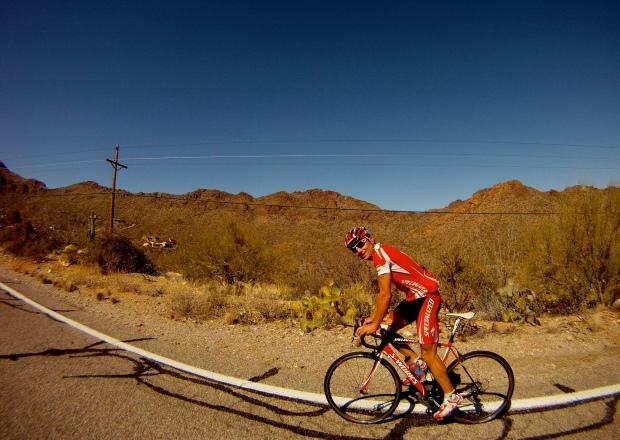
Ben says,
“As a professional triathlete, I get asked a lot of questions about racing and training, and when I listen to other pros respond to the same questions, I think: ‘If these guys did half of what they claim, they'd all be injured or quite a bit better than they are!’
Fact is, I can admit when I don't know the perfect answer to something, and this question may fall outside my ability to cleverly talk my way through. What I can tell you is what I have done historically, and that I have ridden a bike decently fast a couple times in races. When it comes to training on a TT/Tri bike versus a road bike, I have followed a pretty simple routine for the past 5 years.
In the offseason/pre-season (November-February), I spend a lot more time on my road bike, mountain bike, and occasionally cross bike. This a time when I am building my endurance base, getting the aerobic engine humming and efficient again, so I don't focus on the specificity of the TT/Tri bike position. In this time period, 70-80% of my riding is done on a road bike or something other than my race bike. As I build into my race season, that number flip flops and I spend about 80% of my time on the TT/Tri bike, with a weekly ride on the road bike and occasional mountain bike spin to clear the head and keep me sharp for a potential Xterra. Remember, my focus is long course racing, so in addition to considering the optimal balance between position (as it relates to aerodynamic efficiency) and power, I am always conscious of comfort. This means that I need to have a really good, ‘comfortable’ fit, and be extremely used to my position; being as efficient as possible using those muscle groups.
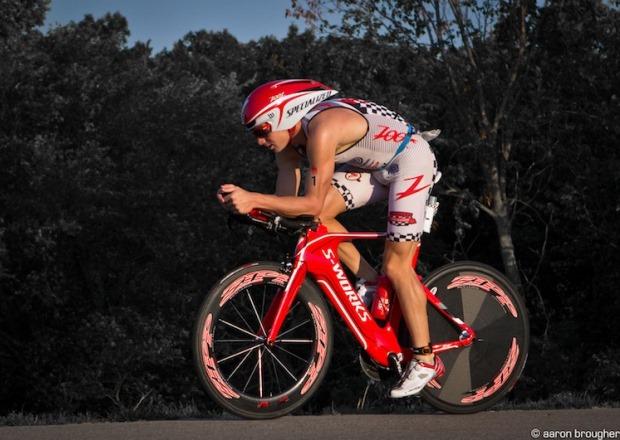
Although I don't think that there is a gaping chasm between the two styles, there are differences between riding a road bike and TT/Tri bike, and they need to be respected. From my years of training around some of the best in the sport (Chrissie , Crowie, Richie, etc), I can tell you that most of these athletes ride almost exclusively on their TT/Tri bikes, especially in race season. I have also heard of many good pros spending the majority of their time riding a road position, and saving their TT/Tri position for the specific effort days, but I think that a lot of it depends on how long your race is, and how well you are fit on your bike. You shouldn't be so uncomfortable on your race bike that you avoid training on it!”
—
Matt asks, “I was a competitive swimmer for about 8 years, and have since ‘retired’ and have been moving over to triathlons. While I was swimming I was a sprinter; any event I did lasted less than 50 seconds. Seeing as moving over to a ‘sprint’ triathlon or even Olympic distance will be over an hour of physical exertion, my question is – how long and how much training will change my muscles over to those longer endurance events like an Ironman. I know this might not be a question you all can answer, however, if you could go over a general statement about muscle fibers and how they can change and how they do change that would be amazing.”
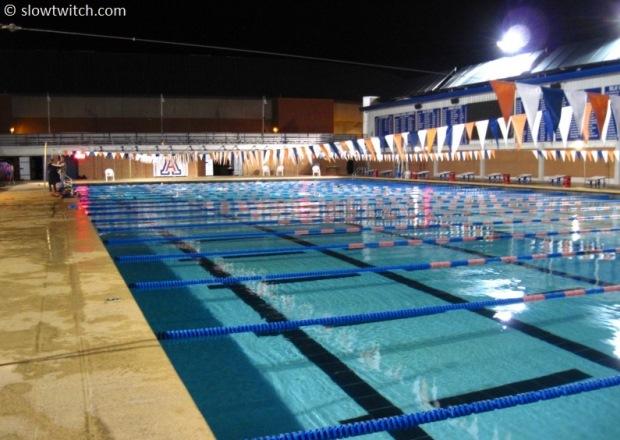
For this one, I went to my friend and biomechanics superstar, Matt Ebersole. Matt owns and operates Personal Best Coaching in Indianapolis, Indiana, and has a big history in running, coaching, and sports-geekdom. I asked Matt to give us the non-encyclopedia answer to this – what’s the version that we can all understand?
Matt says,
“First, you were a competitive swimmer. Your races where short, but how much time did you spend training every day for how many years? I don’t see endurance being an issue for you. However, because you asked, you possess three muscle fiber types. Type I are slow twitch fibers which are called upon during aerobic endurance training and racing. Type II ‘a’ are for relatively long anaerobic work and type II ‘b’ are for explosive anaerobic activity. With endurance training type II ‘b’ can act more like type II ‘a’ and can last longer.
Keep in mind, the law of muscle fiber recruitment which states that muscle fibers are used in an all-or-nothing fashion. When you push on a pedal with 150 watts of power you recruit a certain number of fibers. When you push on that pedal with 225 watts of power you recruit additional fibers to produce the extra power. When the necessary fibers for that power level become exhausted they recruit more. When a whole fiber type is exhausted the next type is recruited until all the muscle fibers have been exhausted.
The better trained you are for an endurance event, the less of a drop off you see in performance when you recruit deeper into the barrel of muscle fibers and from one type to the next. This is why the concept of muscular tension, and how it relates to each workout, is critical to understand to maximize the effectiveness of the work being done and how prepared you will be for your chosen competition. Your combination of fast twitch fibers necessary for successful swim racing and slow twitch fibers to do the volume of training you did should have your competition concerned – very concerned.”
—
Courtney asks, “Do speedsuits really make us faster on the swim? If so, by how much (on average)? For what distance swims, what swimming conditions (calm vs. turbulent), or types of swimmers are they best suited for?”
I’m no swim expert, so I found one for help on this question – Mike Orton of New Zealand-based Blueseventy.
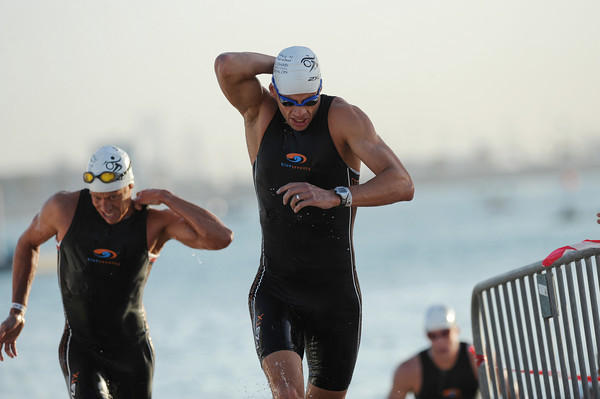
Mike says:
“Yes, they really do work. Speedsuits, more commonly referred to as swim skins, make athletes faster based on three characteristics.
1. Fabric. There are two types of swim skins currently allowed in triathlon. For WTC IRONMAN and 70.3 branded events the suit most be comprised entirely of a textile fabric. The WTC's ruling on this states, ‘swimwear must be 100% textile material, which is defined as materials consisting of natural and/or synthetic, individual and non-consolidated yarns used to constitute a fabric by weaving, knitting and/or braiding. Simply put, this would generally refer to suits made only from nylon or Lycra that do not have any rubberized material such as polyurethane or neoprene’. A quick test – you must be able to blow air through the fabric. This ruling was based on FINA's (the world governing body of swimming) decision to ban from competition swimming the ‘rubber’ based suits which, if you recall, smashed all the world records most famously at the 2008 Beijing Olympics. These swim skins, still permitted in all non-WTC events like the Rev3 series, the Challenge family, Lifetime Fitness series and many more worldwide, are similar in nature to wetsuit neoprene but ultra-thin (0.3mm) and compressed. They provide no buoyancy but gave the feeling of being on top of the water. A slick coating called SCS (Super Composite Skin) is applied to produce a drag coefficient of .032 (50 times lower than skin); the more body surface you can cover with the suit the faster you will be (the fabric is faster than skin and much faster than any commonly purchased triathlon apparel for long course racing on the market). The SCS coating is not permitted on the textile swim skins therefore brands look to coatings or hydrophobic fabrics.
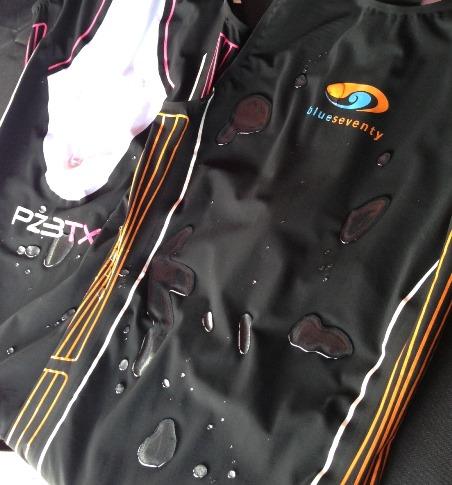
2. Construction. Details matter. Fold over seams help reduce chafing and welded seams reduce surface drag. Wide shoulder gussets and longer leg lengths hide the tri apparel underneath and cover more skin. It's important to note that swim skins are built for the swim only. Zippers are placed on the back to reduce any drag. Some brands even drop the string and instead use innovative locking zippers further reducing any drag.
3. Fit. Honestly, this is where brands with a strong presence in competitive swimming have the advantage. By pushing the boundaries for pool swimmers these brands have access to the latest in microfibre textile technology and a whole lot of testing on fit. Compression is very important feature and key placement will make the swimmer more stream lined drastically reducing wave drag and increasing performance. Like a wetsuit, always try a swim skin on before you buy. The tighter the suit fits, the better.
The advantage of swim skins is dependent on the swimmer. There is no ‘average’ on how much faster one will be, but a common number mentioned for textile swim skins is 1 to 2 seconds faster per 100 meters. They will make you faster in any distance, but naturally the longer the swim the more advantage especially as swimmers begin to fatigue and technique falls apart. Conditions? Not so much. The athlete that swims strongly in turbulent conditions has more to do with their familiarity of handling choppy water. Practice swimming in all types of conditions to become a more confident open water swimmer to reduce any additional race day stress. It is also very common for weaker swimmers to gain more of an advantage from a swim skin then a great swimmer. Why? Well, the advantages of fit, compression and hydrophobic fabrics are all features that help a swimmer become more stream-lined, slicker and faster in the water. Great swimmers naturally have great body position and hence the advantage of wearing a swim skin is not as significant as it is for a weaker swimmer.”



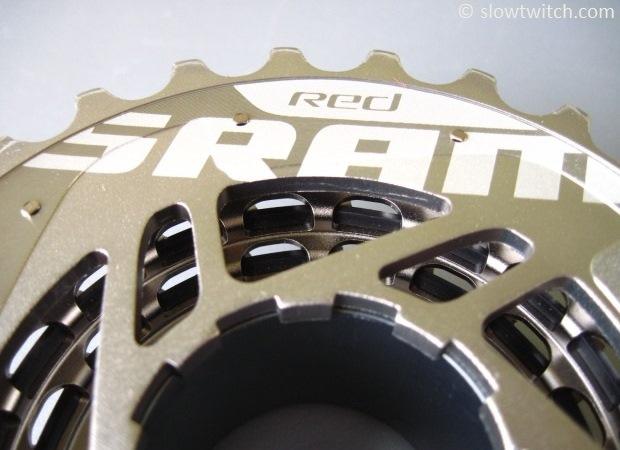

Start the discussion at slowtwitch.northend.network